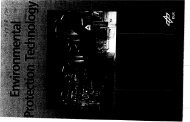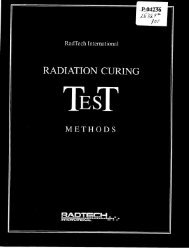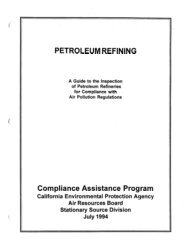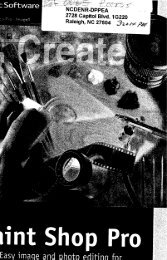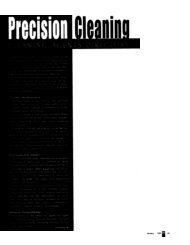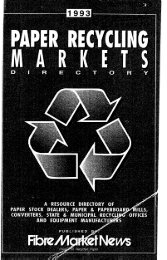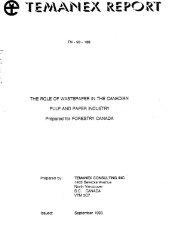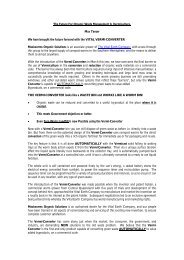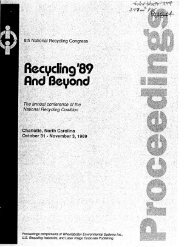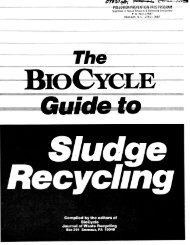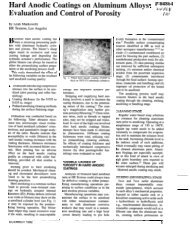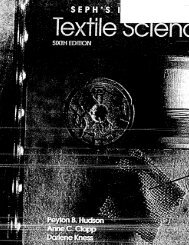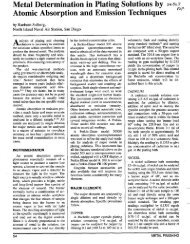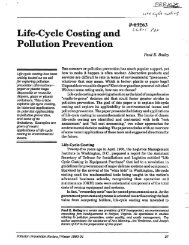Electronic Parts/Guidelines - infoHouse
Electronic Parts/Guidelines - infoHouse
Electronic Parts/Guidelines - infoHouse
You also want an ePaper? Increase the reach of your titles
YUMPU automatically turns print PDFs into web optimized ePapers that Google loves.
7.5.1 .I Resources: Corrugated containers are normally bought by an end user from a local sheet<br />
plant supplier. The sheet plant obtains its corrugated sheets from a corrugation plant, which gets its<br />
liners from a paper mill. There are approximately 21 major paper mills in the US. and approximately<br />
2,000 sheet plants. Depending on the vendor used, the intermediary steps can be all one company (i.e.<br />
trees to paper liners to corrugated sheet to die cut containers) or they can all be dlfferent companies.<br />
The resource for US. corrugated fiber board (soft pines and firs) is considered a renewable resource,<br />
although there is some controversy over this issue. Many large mills harvest trees from private tree<br />
farms. Although clear cutting is a controversial subject, it is the preferred method by paper mills when<br />
harvesting tree farms, due to,the type of trees they replant, which need a large amount of light to grow<br />
fast. Old growth forests and hardwoods are not commonly harvested for use in the paper industry. No<br />
trees are imported from other countries for the paper industry therefore there is no impact to the<br />
depleting rain forests in South America.<br />
7.5.1.2 Manufacturing: Corrugated fiber board is manufactured in several steps. Chemicals,<br />
glues and inks are used to produce the final container. There is a wide range in practices from<br />
company to company on environmental impacts.<br />
Energy Use: 13-26 million Btu’s are used to produce a ton of paper, and there is additional energy<br />
used in the conversion to corrugated and die cutting plus the transportation between plants, but this is<br />
difficult to quantify.<br />
Wetter Use: Approximately 84 liters of water are used per Kg of paper produced. ( It is common prac-<br />
tice to return the water after treatment to the water source . , , the type of treatment and effective-<br />
ness varies from company to company.)<br />
Air Emiss!ons: The quantities of air emissions vary, with some companies claiming up to 100%<br />
capture before release (which is questionable) to the other end of the spectrum. Air releases include<br />
dust, CO, C02, SOX, NOx, Hydrogen Sulfide and Chloroform. Water Discharges: The quantities vary<br />
due to the same reasons as above and include Biological Oxygen Demand (BOD’S) or organic matter,<br />
suspended solids and trace amounts of dioxin.<br />
Hazardous Waste: The following chemicals are associated with the paper industry.<br />
Acetone<br />
Chlorine<br />
Chloroform<br />
Methanol<br />
Formaldehyde<br />
Catechol<br />
Ammonia<br />
Chromium<br />
Hydrochloric Acid<br />
Quantities vary greatly from company to company and actual data on waste sent to hazardous mate-<br />
rials facilities is not available. As a generalization, however, natural kraft utilizes less chemicals than<br />
bleached corrugated<br />
7.5.1.3 Packaging Material Usage<br />
lransportatlon: Although the local sheet plant may deliver the finished containers, the corrugated<br />
sheet stock may have been shipped from another state and the liner board may travel 1,000 miles or<br />
more by rail or truck.<br />
Reusability: Corrugated containers when designed for reuse can last for years, but the normal con-<br />
tainer is used one time.<br />
58 Environmental Packaging <strong>Guidelines</strong>



